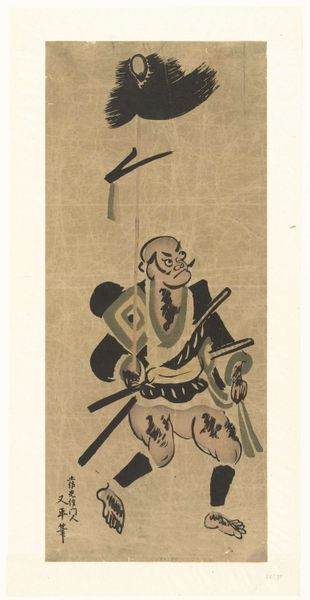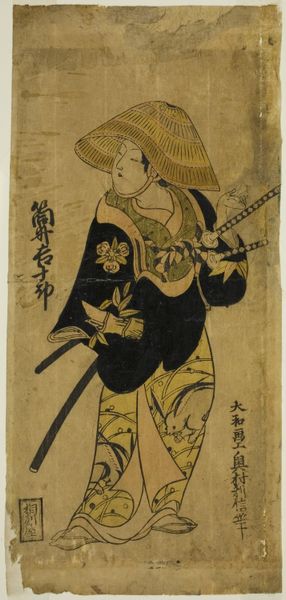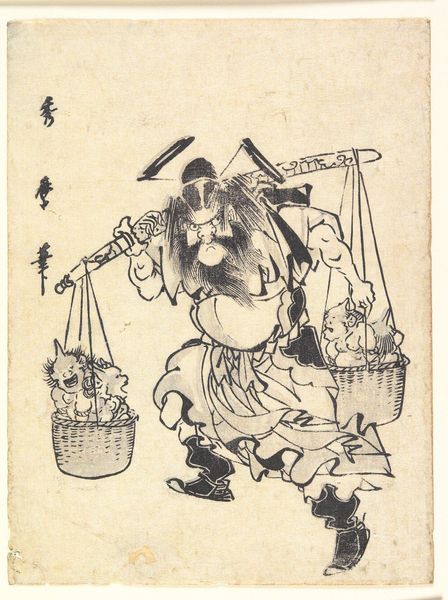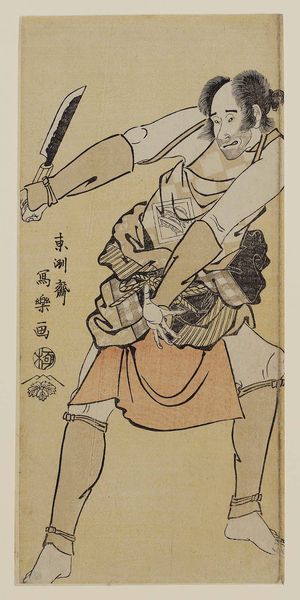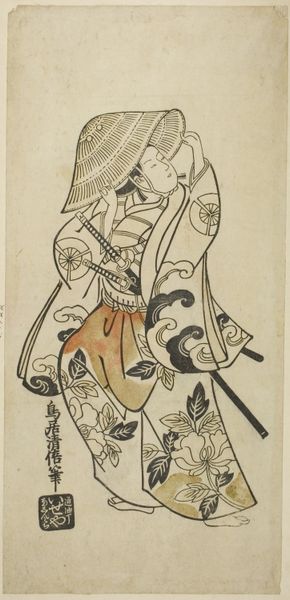
Shôki the Demon Queller, from an album of paintings of Shôki, Edo period (1615–1868) c. 18th century
0:00
0:00
drawing, print, paper, ink
#
portrait
#
drawing
#
ink drawing
#
narrative-art
#
ink painting
# print
#
book
#
asian-art
#
ukiyo-e
#
figuration
#
paper
#
ink
#
history-painting
Copyright: Public Domain
This painting of Shōki the Demon Queller was made with ink on paper during Japan's Edo period, which lasted from 1615 to 1868. The artist is unknown. Shōki, originally a figure in Chinese folklore, was believed to protect against evil spirits and disease. In Japan's Edo period, the rise of a merchant class and urbanization led to new forms of popular culture, as well as anxieties about social order. Images of Shōki became popular during this period. They were often displayed during the Boys' Day festival to ward off illness and misfortune. The bold brushstrokes and dynamic composition capture Shōki's fierce energy. His bulging eyes and clenched fists convey his determination to vanquish demons. This image reflects the social and cultural values of the Edo period, when the figure of Shōki was embraced as a symbol of protection and strength during a time of social change. To understand this artwork better, historians might consult folklore archives, social histories of the Edo period, and collections of prints and paintings from the time.
Comments
No comments
Be the first to comment and join the conversation on the ultimate creative platform.
